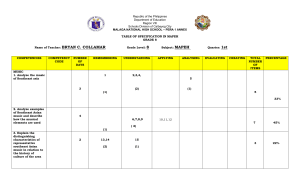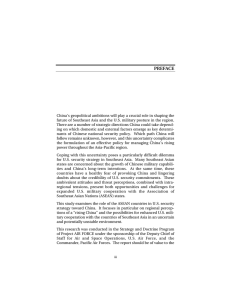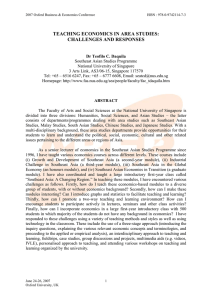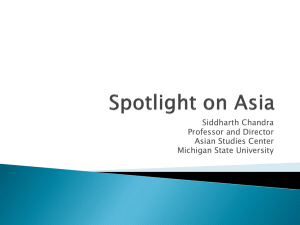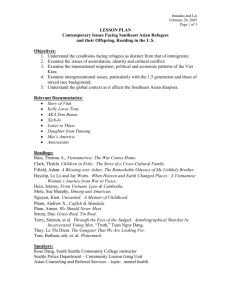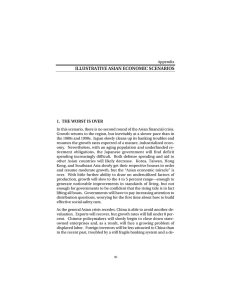Term 1, Week 1
advertisement
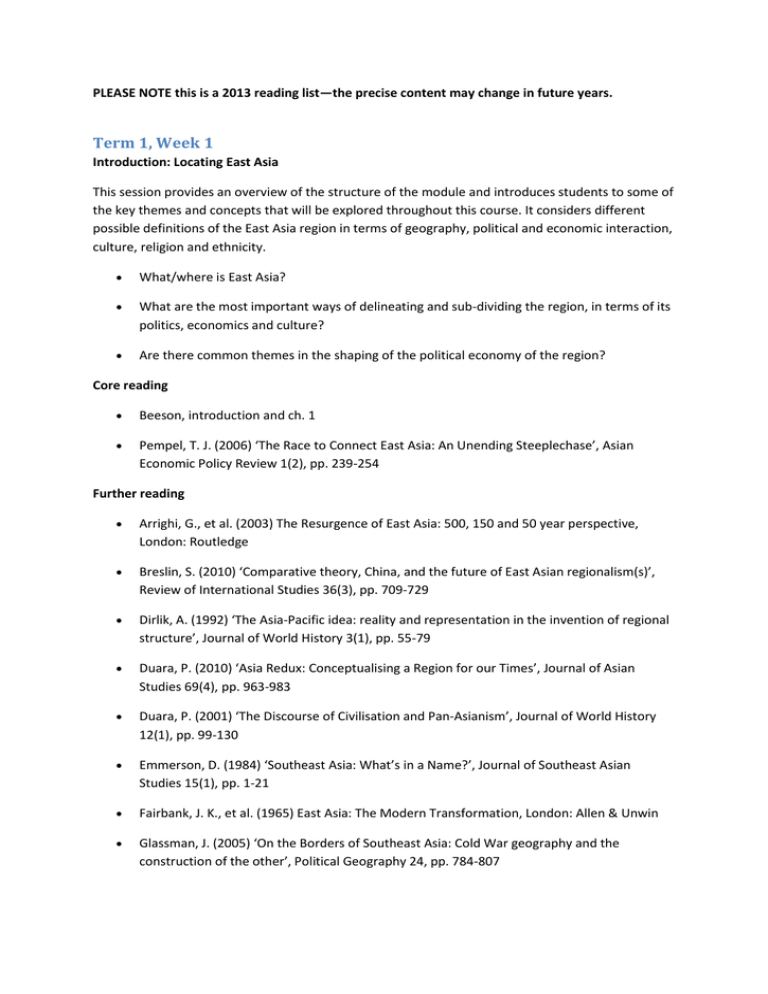
PLEASE NOTE this is a 2013 reading list—the precise content may change in future years. Term 1, Week 1 Introduction: Locating East Asia This session provides an overview of the structure of the module and introduces students to some of the key themes and concepts that will be explored throughout this course. It considers different possible definitions of the East Asia region in terms of geography, political and economic interaction, culture, religion and ethnicity. What/where is East Asia? What are the most important ways of delineating and sub-dividing the region, in terms of its politics, economics and culture? Are there common themes in the shaping of the political economy of the region? Core reading Beeson, introduction and ch. 1 Pempel, T. J. (2006) ‘The Race to Connect East Asia: An Unending Steeplechase’, Asian Economic Policy Review 1(2), pp. 239-254 Further reading Arrighi, G., et al. (2003) The Resurgence of East Asia: 500, 150 and 50 year perspective, London: Routledge Breslin, S. (2010) ‘Comparative theory, China, and the future of East Asian regionalism(s)’, Review of International Studies 36(3), pp. 709-729 Dirlik, A. (1992) ‘The Asia-Pacific idea: reality and representation in the invention of regional structure’, Journal of World History 3(1), pp. 55-79 Duara, P. (2010) ‘Asia Redux: Conceptualising a Region for our Times’, Journal of Asian Studies 69(4), pp. 963-983 Duara, P. (2001) ‘The Discourse of Civilisation and Pan-Asianism’, Journal of World History 12(1), pp. 99-130 Emmerson, D. (1984) ‘Southeast Asia: What’s in a Name?’, Journal of Southeast Asian Studies 15(1), pp. 1-21 Fairbank, J. K., et al. (1965) East Asia: The Modern Transformation, London: Allen & Unwin Glassman, J. (2005) ‘On the Borders of Southeast Asia: Cold War geography and the construction of the other’, Political Geography 24, pp. 784-807 Godement, F. (1997) The New Asian Renaissance: From Colonialism To The Post-Cold War, London: Routledge, introduction Henderson, J. (2011) East Asian Transformation, London: Routledge, chapters 1 and 2 Karl, R. E. (1998) ‘Creating Asia: China in the World at the Beginning of the Twentieth Century’, American Historical Review 103(4), pp. 1096-1118 Korhonen, P. (1997) ‘Monopolising Asia: the politics of metaphor’, The Pacific Review 10(3), pp. 347-365 Oga, T. (2004) ‘Rediscovering Asianness: the role of institutional discourses in APEC, 1989– 1997’, International Relations of the Asia Pacific 4(2), pp. 287-317 Rajah, A. (1999) ‘Southeast Asia: Comparatist Errors and the Construction of a Region’, Southeast Asian Journal of Social Science 27(1), pp. 41-53 Snitwongse, K. (2003) ‘A New World Order in East Asia?’, Asia-Pacific Review 10(2), pp. 36-51 Van Schendel, W. (2002) ‘Geographies of Knowing, Geographies of Ignorance: jumping scale in Southeast Asia’, Environment and Planning D: Society and Space 20(20), pp. 647-668 Wang, H. (2007) ‘The politics of imagining Asia: a genealogical analysis’, Inter-Asia Cultural Studies 8(1), pp. 1-33
